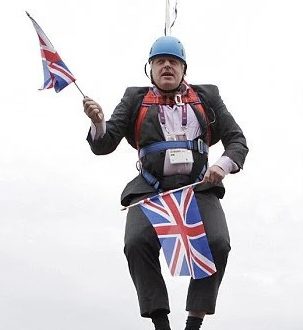This is a guest post by Peter Tatchell
No British government from 1955 to 2005 won a majority of the popular vote. Every government took power based on less than 50% of the votes cast – and usually with the support of not much more than 30% of eligible registered voters.
For half a century not a single government secured majority public support at the ballot box. Every parliament and every government between 1955 and 2010 was unrepresentative of the wishes of the British people. Many more people voted against these governments than voted for them.
Even the landslide majority of seats won by Margaret Thatcher in 1983 and by Tony Blair in 1997 were based on a minority of votes – less than 45% of the votes cast and only about 35% of eligible voters.
This absence of a representative parliament and government has been made possible because of the current voting system – the deeply flawed method of first past the post (FPTP). Under FPTP the candidate with the most votes is elected MP, even if they get only 20% of the votes in a six-way contest and even if 80% of the electorate vote against them.
This is not democracy. It is political corruption on a massive scale.
The right of people to a fair voting system that elects a representative parliament and a government with majority support is a fundamental human right. It is what defines a truly democratic society.
This why we have to change the voting system. The Alternative Vote (AV) is not the best method but it is much better than FPTP. Although I would prefer genuine proportional representation (PR), this option isn’t on offer. AV is. AV is our only chance to secure fairer votes.
A win for the ‘No’ campaign on Thursday would be disastrous. It would retain the existing flawed FPTP system. This would set back the struggle for a fair and democratic method of elections for a generation.
To give one example of the unfair, anti-democratic nature of our current FPTP voting system:
In the 2005 election, Labour won 35% of the vote but bagged 55% of the seats. More people didn’t vote (39%) than voted Labour. Of the eligible voters, only 22% voted Labour. Yet with the support of only one-fifth of the electorate Labour won a 66-seat majority.
This echoes the gerrymandering and ballot-rigging of two centuries ago, which galvanised the Chartists to campaign for a democratic, representative parliament.
Under FPTP, the electoral process is ‘rigged.’ In 2005, if we total all the votes cast for the main three parties, it took an average 26,906 votes to elect a Labour MP, 44,373 to elect a Tory MP and 96,539 votes to elect a Lib Dem MP.
Not since the rotten boroughs of the eighteenth century have elections been so corrupt.
A democracy requires a parliament that reflects the people’s will; where the proportion of seats won corresponds to the proportion of votes cast. This means finishing the parliamentary reform process begun by the Chartists nearly two centuries ago.
For the future, the ideal electoral method would be the Additional Member System, which is used for elections to the Scottish Parliament, Welsh Assembly and London Assembly. It is a practical example of a fairer electoral process. Electors vote for both a constituency MP and for a party list:
This combines the accountability of single-member constituencies with additional ‘top-up’ MPs based on the total list vote received by each party; thereby ensuring proportionality between the number of votes cast for a party and the number of seats it wins. This system works in Scotland, Wales and London, why can’t we have it at Westminster?


